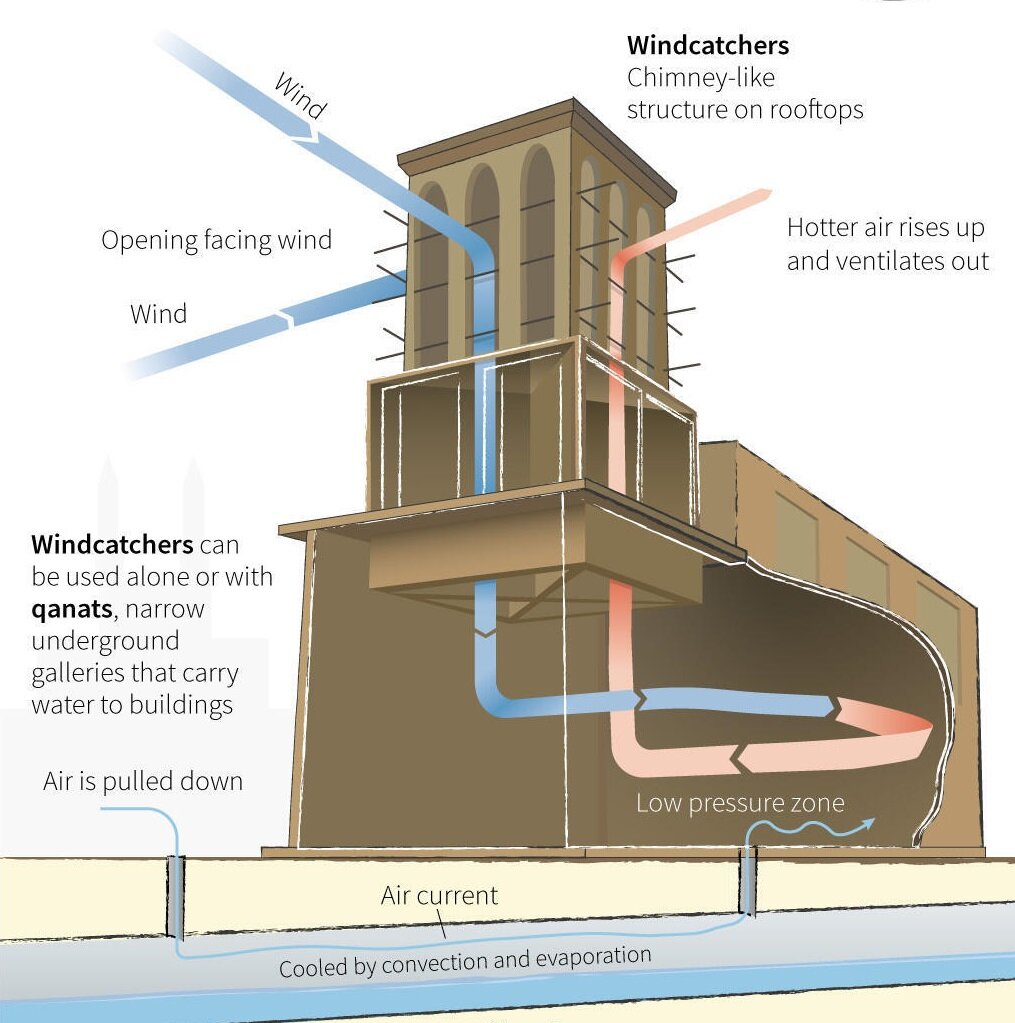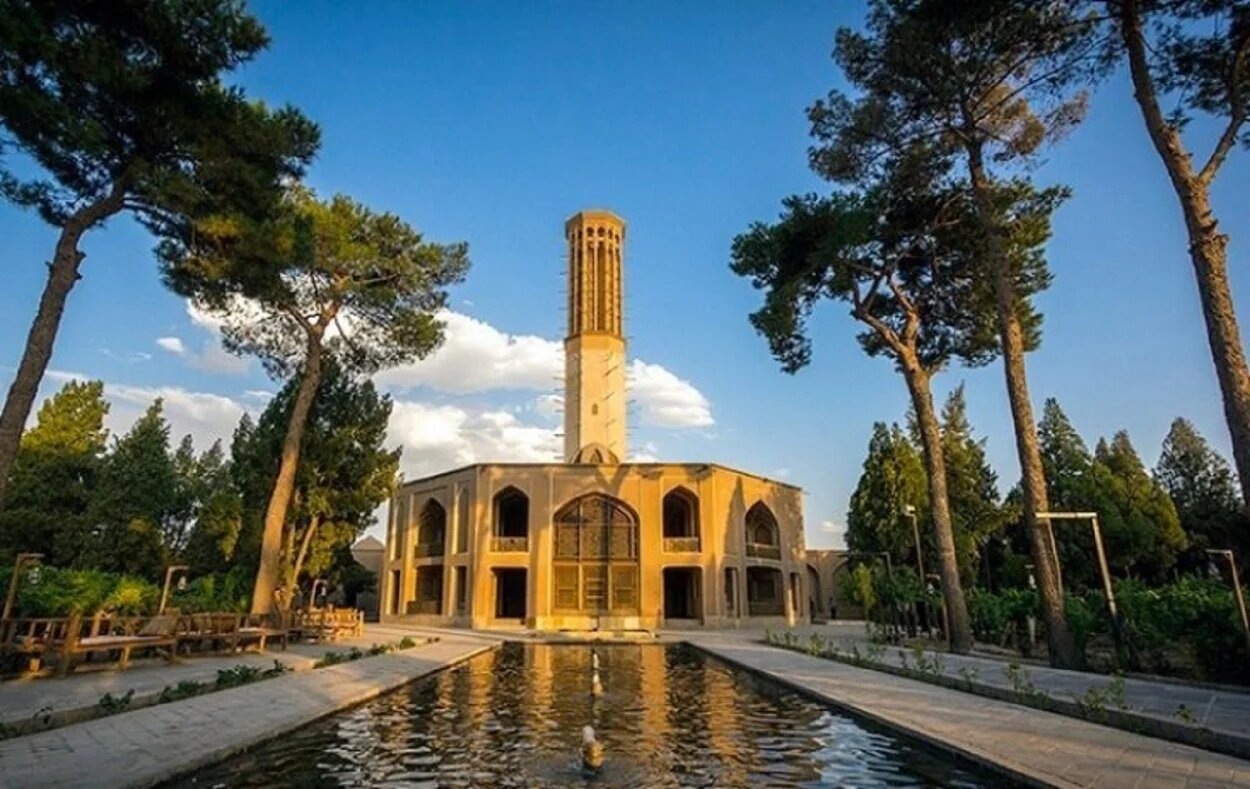Windcatchers have been a sustainable solution to cooling and ventilation in arid climates, predating modern air conditioning by millennia. They are chimney-like towers with open sides designed to capture breezes high above ground level and direct them into the buildings below.
 By channeling cool air downward and expelling warm air through opposite vents, they provide natural ventilation and reduce indoor temperatures by an impressive 8 to 12 °C. (46 to 53 °F) In some cases, the incoming air is directed over water offering additional cooling.
By channeling cool air downward and expelling warm air through opposite vents, they provide natural ventilation and reduce indoor temperatures by an impressive 8 to 12 °C. (46 to 53 °F) In some cases, the incoming air is directed over water offering additional cooling.
Even on still days, when there is a complete absence of wind, passive solar energy enhances natural ventilation through the convection of air heated by the sun. This way, warm air rises through it, drawing down cooler air into the building from the other side.
 Windcatchers typically consist of three main components: a shaft, which serves as a channel for air; a wind scoop, located at the top, which captures and directs the wind, and a diffuser, at the base, which evenly distributes the air throughout the building. These elements work together to create a pressure differential, ensuring a steady flow of fresh, cool air into the heart of homes, bazaars, mosques, and even palaces.
Windcatchers typically consist of three main components: a shaft, which serves as a channel for air; a wind scoop, located at the top, which captures and directs the wind, and a diffuser, at the base, which evenly distributes the air throughout the building. These elements work together to create a pressure differential, ensuring a steady flow of fresh, cool air into the heart of homes, bazaars, mosques, and even palaces.
 Some architects today draw from their principles, integrating natural ventilation systems into contemporary designs. Efforts to restore and preserve these timeless structures highlight their cultural value and historical importance, ensuring that future generations can marvel at their elegance and ingenuity.
Some architects today draw from their principles, integrating natural ventilation systems into contemporary designs. Efforts to restore and preserve these timeless structures highlight their cultural value and historical importance, ensuring that future generations can marvel at their elegance and ingenuity.
You can read the original article at www.tehrantimes.com

